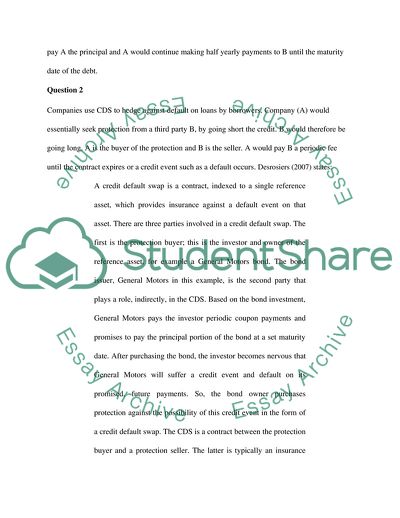Cite this document
(Credit Default Swap Assignment Example | Topics and Well Written Essays - 1500 words, n.d.)
Credit Default Swap Assignment Example | Topics and Well Written Essays - 1500 words. https://studentshare.org/macro-microeconomics/1746858-credit-default-swap
Credit Default Swap Assignment Example | Topics and Well Written Essays - 1500 words. https://studentshare.org/macro-microeconomics/1746858-credit-default-swap
(Credit Default Swap Assignment Example | Topics and Well Written Essays - 1500 Words)
Credit Default Swap Assignment Example | Topics and Well Written Essays - 1500 Words. https://studentshare.org/macro-microeconomics/1746858-credit-default-swap.
Credit Default Swap Assignment Example | Topics and Well Written Essays - 1500 Words. https://studentshare.org/macro-microeconomics/1746858-credit-default-swap.
“Credit Default Swap Assignment Example | Topics and Well Written Essays - 1500 Words”. https://studentshare.org/macro-microeconomics/1746858-credit-default-swap.


